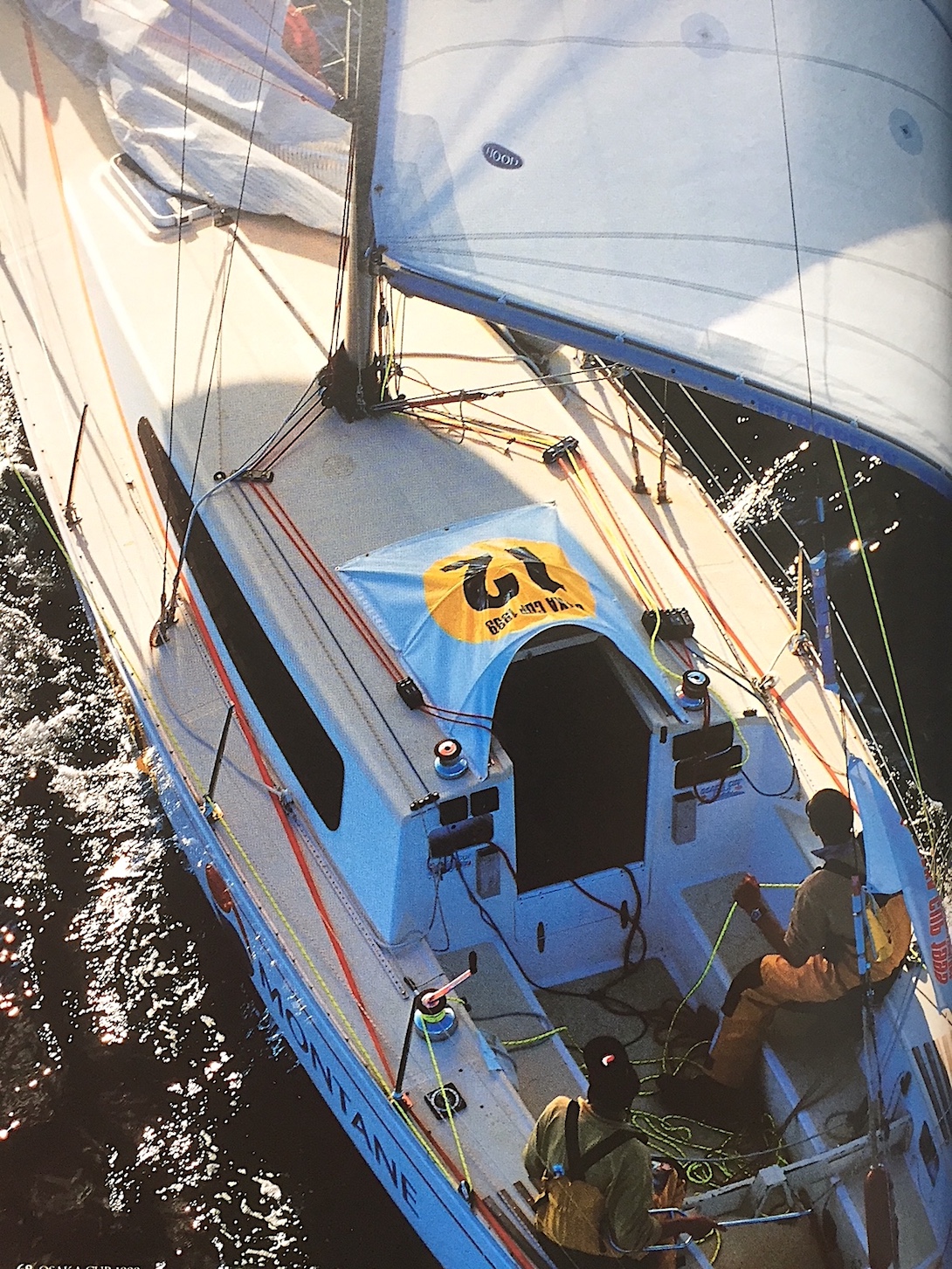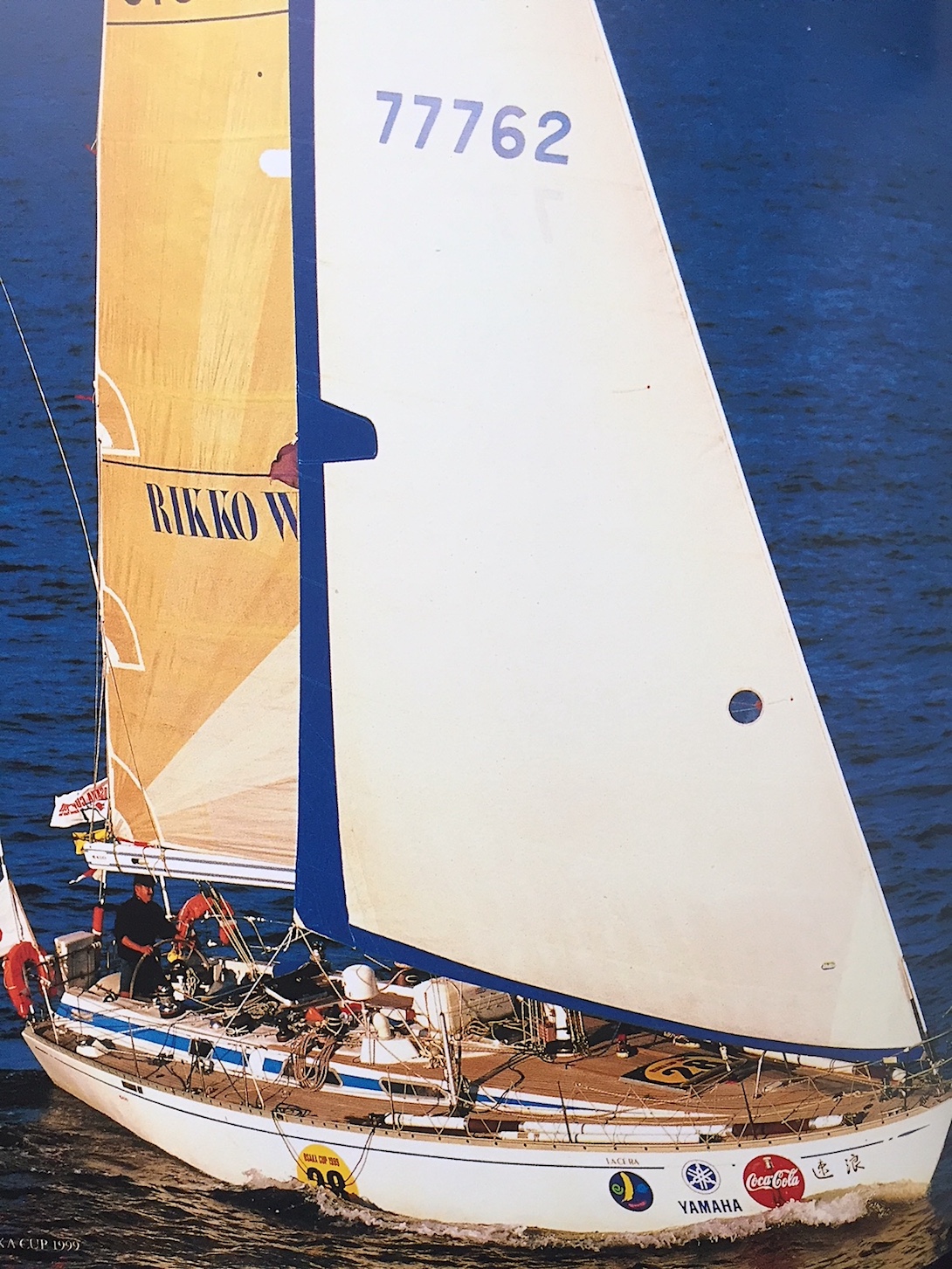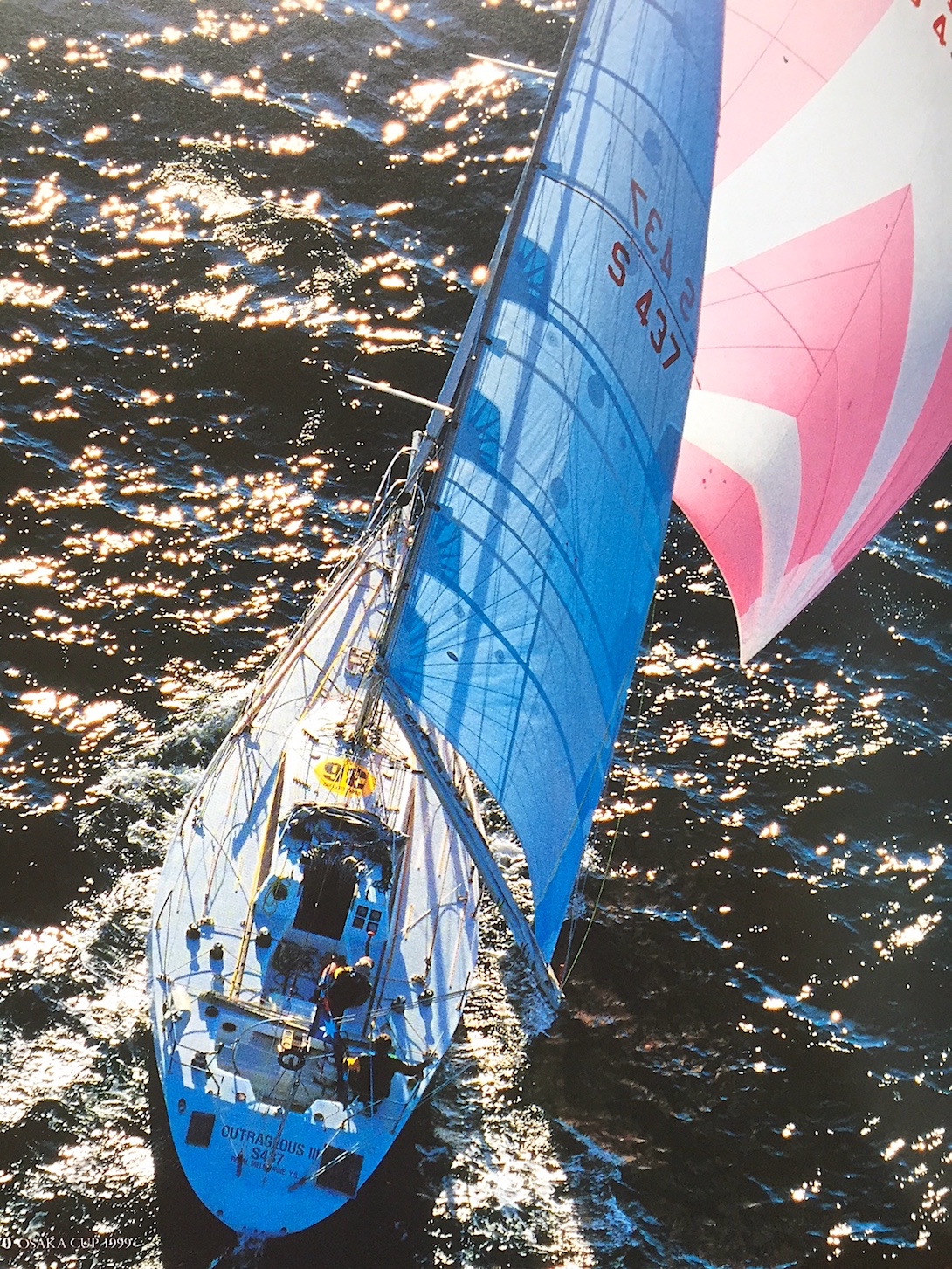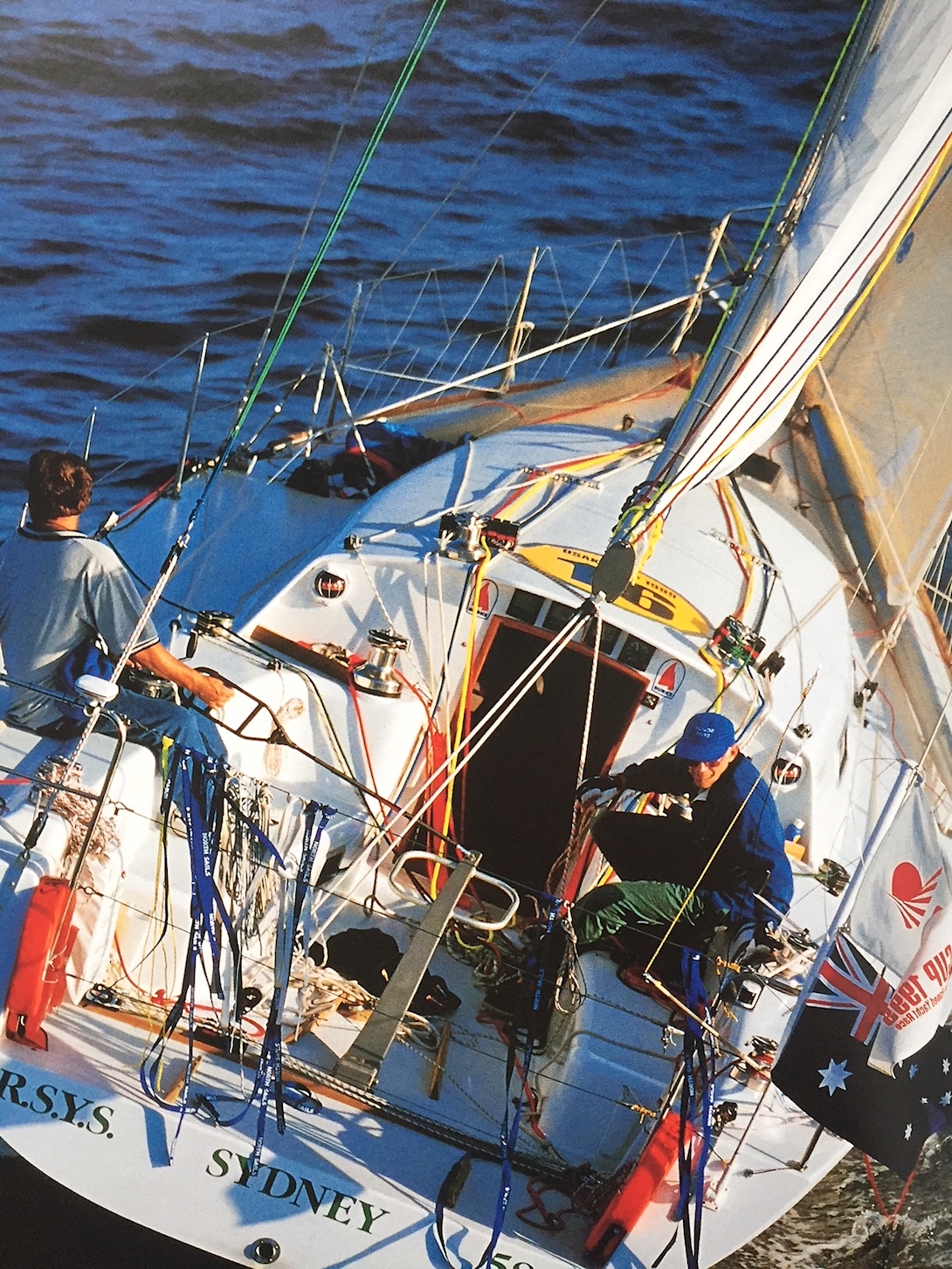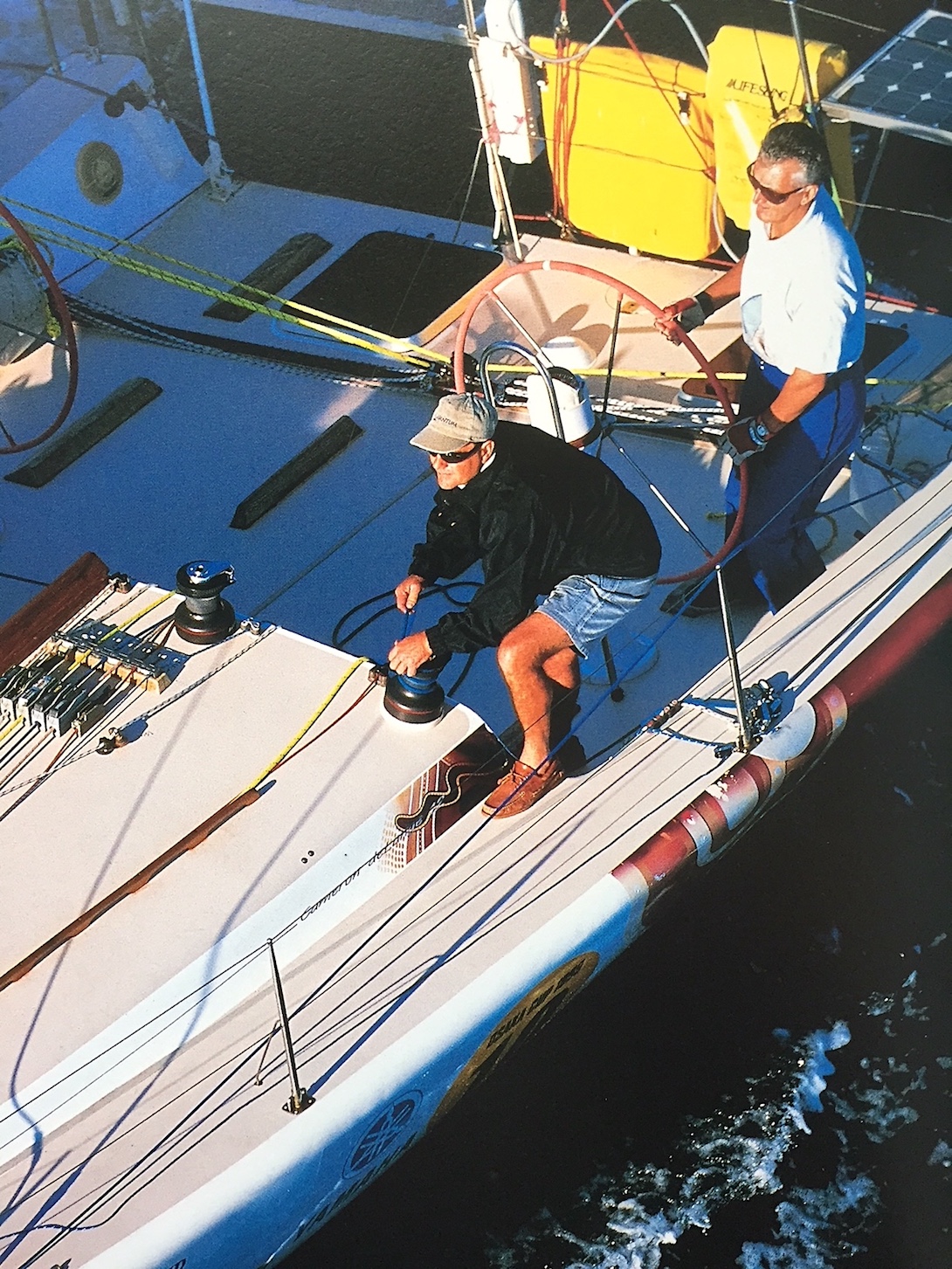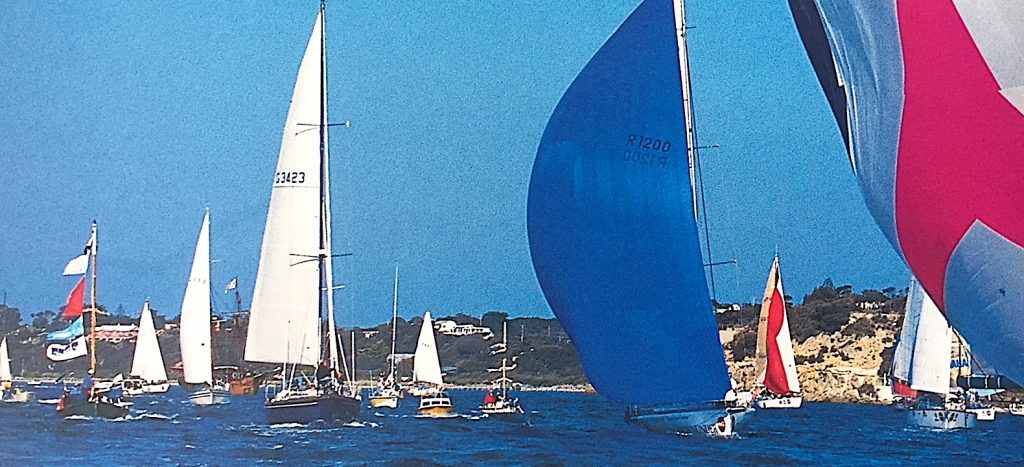
First Leg The First Leg started at 1000 hours on April 17 from Port Melbourne. With very light wind from the north, the fleet had trouble in building up any speed. The boats were hard to maneuver and “Lucky Lady V” was recalled. Through this difficult situation, “Southwind by YAMAHA” (hereafter “YAMAHA”) started with good timing. “Longitude” also started in a good speed from the lee side. Although there was some sea breeze that came later, the course was shortened to Sandringham and the competitors then headed for Blairgowrie and anchored close to the original finishing point at Rye. Some boats retired in the early stage, to continue with their preparation for the Second Leg on the following day.
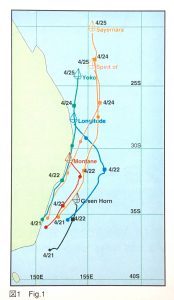 Second Leg Start The Second Leg started at 1530 hours on April 18 from Portsea. Due to the strong tide at the exit of the bay, the start time was delayed a little more than past races and by then a comfortable sea breeze was blowing from the south. The weather was clear and at its best for racing. At the same time as the start gun, “Montane” hoisted her spinnaker and crossed the starting line first at top speed. Then, “Sayernara” crossed the line with her masthead kite near the starting vessel and chased “Montane”. “Longitude” took some time to shoot the huge gennaker, but it only took them a moment before they took the lead when their gennaker caught wind. In the meantime, “Sayernara” discovered that they seaweed around the keel and had to stop the boat to remove it and then, regained their speed to catch up to “Longitude”.
Second Leg Start The Second Leg started at 1530 hours on April 18 from Portsea. Due to the strong tide at the exit of the bay, the start time was delayed a little more than past races and by then a comfortable sea breeze was blowing from the south. The weather was clear and at its best for racing. At the same time as the start gun, “Montane” hoisted her spinnaker and crossed the starting line first at top speed. Then, “Sayernara” crossed the line with her masthead kite near the starting vessel and chased “Montane”. “Longitude” took some time to shoot the huge gennaker, but it only took them a moment before they took the lead when their gennaker caught wind. In the meantime, “Sayernara” discovered that they seaweed around the keel and had to stop the boat to remove it and then, regained their speed to catch up to “Longitude”.
East Coast of Australia On April 20, the low pressure that had already appeared on the weather map before the start, kept growing and caught the race fleet. Fig.1 shows the courses of several boats along the East Coast of Australia between April 21 and 25. On April 21, “Sayernara”, “Spirit of Downunder” (hereafter “Spirit”) and “Longitude” were sailing aligned, followed by “Yoko”. Then, “Spirit” and “Yoko” started taking the course close to the shore but “Longitude” and “Sayernara” kept the offshore course at full speed and took the lead on April 22.
Soon after, however, “Longitude” had trouble with the boom and was forced off the course. On their way to Brisbane, they were caught up by “Spirit” that had started going offshore on April 23. “Longitude” decided to retire shortly after that. Meanwhile, “Sayernara” kept her fast speed leaving the second runner more than 200 n.m. behind. “Green Hornet” which was sailing the most easterly course, capsized in the storm on April 23. They were forced to abandon the boat and were rescued from their liferaft on the morning of April 24. The leading boat “Sayernara” was sailing offshore similar to “Green Hornet”, however, they were some 500 n.m. north and the sea conditions seemed quite different. “Montane” anchored at Trial Bay seeking shelter on April 23 and some others called a port for repair. Smaller boats in the fleet had to sail with the low and although they kept going, they could not escape it. When the low had passed some resumed racing and others were forced to retire with regret. On April 26, the low finally ceased and the leading “Sayernara” was already sailing 290 n.m. ahead of the followers.
Analysis of Weather & Sea Conditions: April 22-24
Strong wind and huge waves along the Eastern Coast of Australia
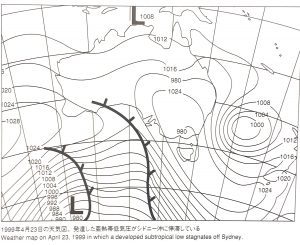
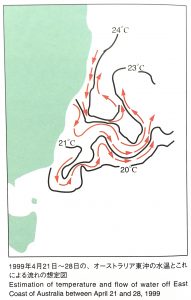
The first crisis in the Second Leg came along with strong winds and huge waves as the race fleet approached the East Coast of Australia. On April 21st, a deep trough reached the center of the Tasman Sea accompanied by a low to the south. At around 36S 161E in this trough, a subtropical low pressure was formed. With sufficient supply of humidity and heat from the north, this low kept growing into a severe low of 1000 hpa at 1200 hours on April 22 and 995 hpa around 35S 160E on April 23.
Due to this developed low, strong winds from the south blew until April 25 over a broad area along the East Coast of Australia where the race fleet were sailing north. It can be observed from the data that, in the same southerlies, wind speed, wave height and severity differed by area. The worst winds and waves occurred around 35 – 33S. Particularly at the waters where a strong current flows southeasterly from off Sydney: The severe waves, short in length, were generated with the strong southerlies blowing over the current and hit the fleet that was sailing off the wind at high speed. The leading boat passed this area in the early stage after the low had generated strong winds and high waves, which resulted in the distance between the top and those following. This low is considered to have been the critical factor in the eventual race result.
Email Reports from Competitors
“Montane” : April 24 at anchor in Trial Bay – The last few days at sea have been horrendous. The waves were towering vertical walls of water with foaming white peaks roaring down at us. The waves rolled in from the SE and the SW and when these met a huge tower of white water would be thrown into the air. During the day we could try and steer around the waves, at night we were at their mercy. At one time a wave broke over me as I was steering. It seemed like an eternity that thundering water poured over me. It was hard to sleep or move around, hard to cook and very wet. This was not the place for little boats.
“Yoko”: April 22 – The front hit us at Eden and we have had 25 – 45 knots from the Southwest, South and Southeast with squalls and rain to 50 knots. Thank the Lord it is from behind us. We have had some tense moments with being pooped and a near knockdown. We reduced our watches to 2 hours each, but at times were falling asleep and suffering involuntary gybes. From Port Stephens at the present, we have a following •i I rrcant which has flattened the sea considerably and giving us a break.
Rescue of Green Hornet
April 22: “Green Hornet” sailing in the strong south wind was knocked down and the Crew, Gordon Mann injured arm after being blown away at the helm.
April 23: On their way to Sydney to receive medical treatment for Gordon, the boat was knocked down again, in which the Skipper, Brian Murray was also injured and the hull received heavy damage. They moved into the liferaft taking the ARGOS beacon with them, having had to leave the EPIRB in the cabin. 1500 hours EST, ARGOS headquarters in France contacted Sandringham Yacht Club reporting the emergency signals received from “Green Hornet”. 1745 hours EST, SYC asked AusSAR for the search. 2200 hours EST, the aircraft sighted a weak light around the site. A ship and a helicopter were dispatched and rescue started at daylight.
April 24: 0755 hours EST, HMAS “Warrnambool” picked up both crew-members. “Green Hornet” sank.
Equatorial Doldrums
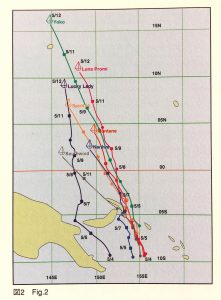

The race fleet was approaching the Equatorial Doldrums. As many of the past competitors have mentioned “those who overcome the light weather will conquer OSAKA CUP”, it is a critical point for the race result how quickly it is passed. Fig.2 shows the courses of some boats between May 4 and 12. On May 4, “Lucky Lady V” and “Luna Prominence” were sailing at almost the same latitude. Although “Lucky Lady V” was doing quite well with a westerly detour and good wind, the sailing distance along the latitude was not very much. On May 8, “Luna Prominence” crossed the Equator slightly earlier and the eastern course they took seemed favorable in the NE Trade Winds, as it was more windward. “Naniwa”, “YAMAHA” and “Montane” were located along almost the same latitude on May 4. Being a heavy boat, “Naniwa” managed the storm with good speed, however, she was too heavy in this light wind zone. Meanwhile, “Montane’ took the lead making full use of her light displacement. “YAMAHA” was also doing well, however, they retired. “Yoko” and “Spirit” arrived at this area earlier than the three boats above. While “Spirit” called Lihir Island to repair their alternator, “Yoko” increased the lead and kept this placing to Osaka: second arrival and Winner of C-A Class. “Sayernara” ahead of “Yoko” was already a runaway at this stage and kept this pace to take Line Honors.
Analysis of Weather & Sea Conditions: May 4-12
Strategy in the Solomon Sea
The waters in the Solomon Sea at 10S reaching 10S are known for weak winds off the Trade Winds zones. The courses taken by the fleet from May 4 until 12 show the characteristics of the wind in this area. One of the keys to this area is whether it is passed on the east or west side of New Britain Island along the course. The course heading northwest to the west of Papua New Guinea allowed for sailing along the current flowing toward northwest, but the calm area was broad. Meanwhile, the course heading north to the east of Bougainville provided them with less calms but possible counter currents. The comparison between the westerly course taken by “Lucky Lady V” and the easterly course taken by “Yoko” and “Luna Prominence” shows that the current along the Northeast Coast of New Guinea was certainly there but not strong enough. In the meantime, the sea breeze along the East Coast of New Ireland and squall winds affected the fleet. There remained weak easterlies in the doldrums between 5S to the Equator and these winds blew better in the area east of 150E. The NE trade winds above the Equator increased as the fleet sailed north, which favored the eastern area.
Email Reports from Competitors
Naniwa: May 4 at 09 01N 154 E – The rain lasted for two days with unstable winds. It is not only our area that lack wind. Other places may have wind also. Luna Prominence, Yamaha, Montane, Outrageous III, Lucky Lady and ourselves are sailing almost in the same area. We still have a chance.
Spirit of Downunder: 1743 EST May 5 – “Sayernara” has increased her lead to 270 n.m. but the good news is we are out of Solomon Sea — Praise the Lord. News Flash: “Lucky Lady V” has displaced us for 3rd position by going through the gap between Papua New Guinea and New Britain!! Peter has just run out of beer and is on this last packet of fags!!
Approaching Japan
For R-C Class, severe competition went on even in the NF Trade Winds.
On May 16, “Spirit” was leading the Class, followed behind by “Outrageous III” by 155 n.m. and “Montane”, behind by another 110 n.m.
Then, “Montane”, the smallest boat in the fleet with a slender and light hull, achieved speed good enough to catch up to “Outrageous III” on May 19.
On the following day, May 20, she overtook “Outrageous III” but could not catch up to “Spirit” and kept this placing to the finish. In the 1995 event, the selection of the course to cross the Kuroshio had reversed the placings, however, the placings in this race had already been confirmed when the fleet first approached this area. Compared to past races, the 1999 event started around three weeks late. This might have resulted in the calms in Osaka Bay that many of the boats experienced, though it did not affect the placings. Meanwhile, “Brindabella II” showed stable performance being the winner and the only boat to complete the course in C-C Class. “Ann Marie” in the same Class also arrived in Osaka without calling into any ports, however, she could not make the finish in her time limit and was recorded as DNF.
In conclusion, the critical factor in this race was the severe weather right after the start. Since the fleet had already been scattered in a vast area, the difference in weather and sea conditions and the boat size might have greatly affected the race development. Also, it can be said that there were more retirements and repairs at ports among the entries that suffered from insufficient preparation.
Analysis of Weather & Sea Conditions: May 16-20
Competition around Japan
The last barrier to overcome in the race is a weak wind zone in the center of the ridge extending southwest from the North Pacific High Pressure. “Spirit” successfully passed this area of weakest winds on May 16 and 17 with a day run of 138 n.m. at an average speed of 5.75 knots. However, when “Montane” and “Outrageous III” passed the same area on May 19 and 20 they only managed to cover 103 n.m. (4.4 knots on average) and 87 n.m. (3.8 knots on average) respectively.
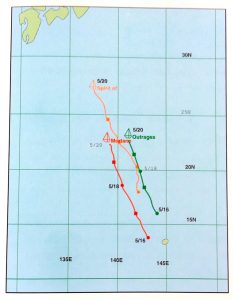
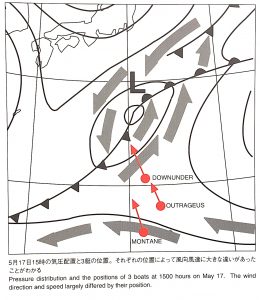
The day run between “Montane” and “Outrageous III” differed most on May 17 and 18. Since “Montane” was sailing the area with winds around the high, she could achieve 174 n.m. with an average speed of 7.3 knots, whereas, “Outrageous III” covered only 89 n.m. with an average speed of 3.7 knots. When the fleet sailed north through the Pacific, it was favorable to sail easterly up to 10 N and then to sail westerly up until off Honshu. As a result, the ideal course to follow looked more like an “S” shape instead of sailing north straight along the great” circle route.
Email Reports from Competitors
“Spirit of Downunder”: 0204 hours EST, May 19 – We are at 23 38N 139 22E and have the big code zero up again at night because we were so peed off to find that “Luna” had pulled out 88 n.m. on us in the last 24 hours. And if you divide 88 by 24 that means they averaged about 3 knots per hour faster than us — how can they get that much more wind than us — life’s cruel some times. Food situation is deteriorating and it’s noodles and more noodles. The cigs are all gone, the grogs due to run out tomorrow happy hour.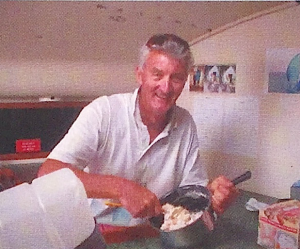
May 22 – Thought you might like to see how we are passing the time aboard Spirit of Downunder as we wait for the wind to blow us to Japan. Peter took the photos of me as he carefully guided me through the bread making process and I am pleased to say my first loaf of bread was a success.
“Naniwa”: 1700 JST, May 22 – There are 430 n.m. to go to Cape Muroto and we are sailing closehauled for 340 degrees at 7 knots. We expect to see the lighthouse of Muroto by midnight 24th. I look forward to seeing Japan after a few months. Although I feel a little bit sad about finishing this journey, it will be most pleasing to meet my friends in Osaka.
Analysis of weather & sea conditions by Kinihiko Baba – Meteorologist and Oceanographer

